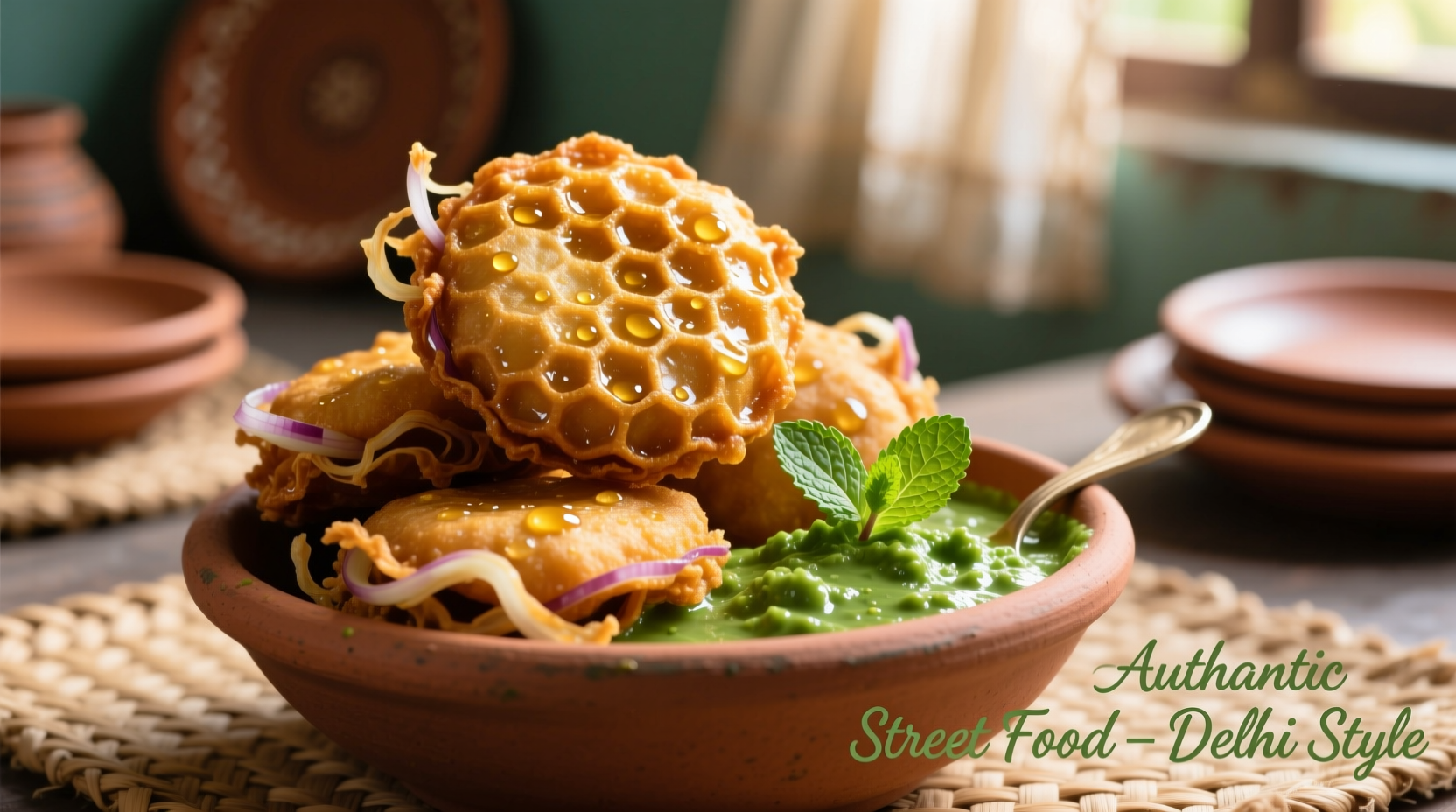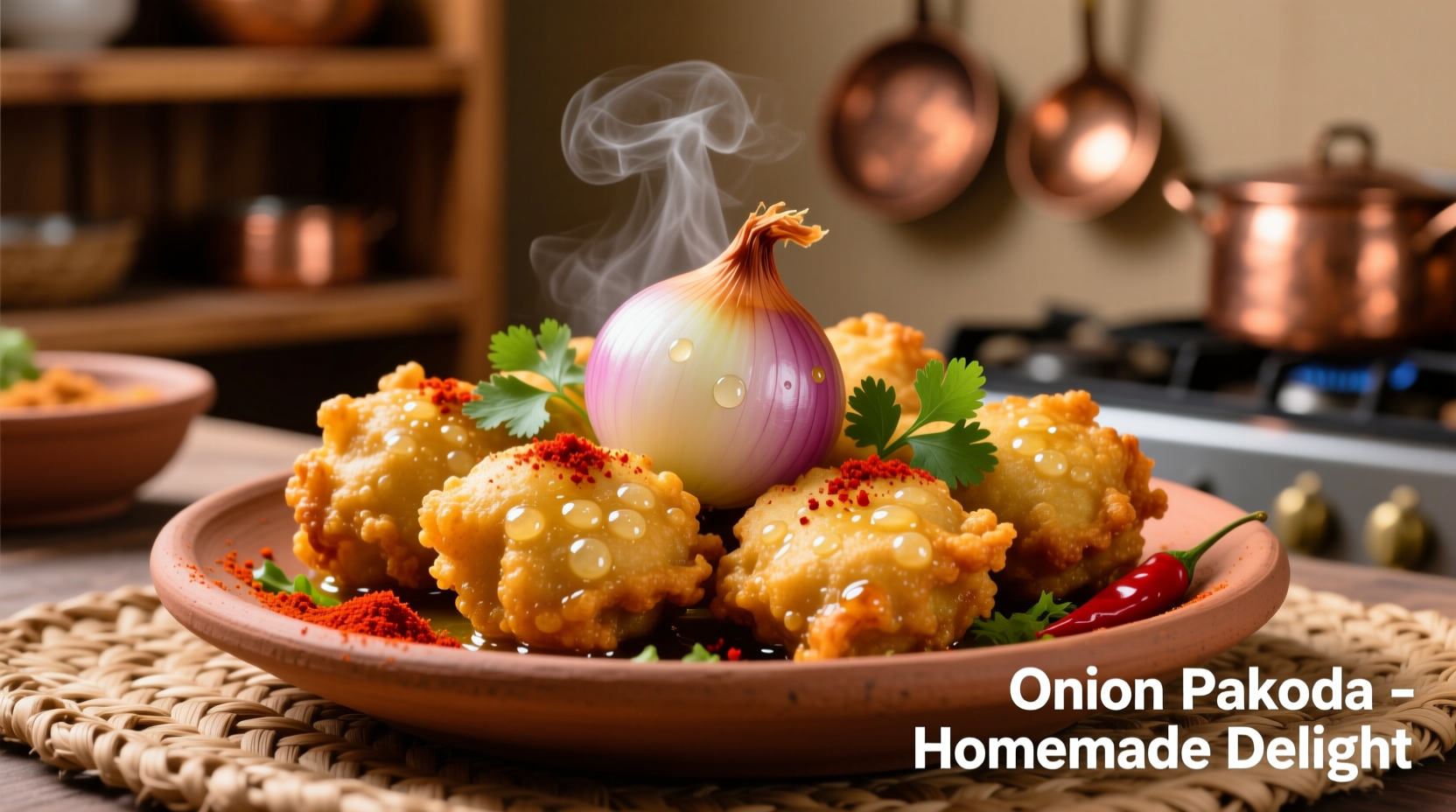The Essential Guide to Making Crispy Onion Pakoda at Home
Onion pakoda, those golden-brown fritters beloved across India, transform simple ingredients into an irresistible snack. Whether you're craving street food nostalgia or preparing for monsoon evenings, mastering this recipe brings authentic Indian flavors to your kitchen. This guide delivers professional techniques used in Indian households for generations, ensuring perfectly crisp pakodas every time.
Why Onion Pakoda Captivates Taste Buds Worldwide
Originating in the Indian subcontinent, onion pakoda (also called onion bhaji) has evolved from Mughlai cooking traditions into a global favorite. Food historians document pakodas appearing in 16th century Indian culinary texts, where they served as portable snacks for travelers. The magic happens through Maillard reaction - when chickpea flour hits hot oil, it creates complex flavors while forming that signature crisp exterior.
| Regional Variation | Distinctive Feature | Common Additions |
|---|---|---|
| Northern India | Thicker batter coating | Cumin seeds, carom seeds |
| Southern India | Thinner, crispier texture | Curry leaves, mustard seeds |
| Gujarati Style | Slightly sweet profile | Sugar, turmeric |
Your Onion Pakoda Ingredient Checklist
Quality ingredients make the difference between soggy disappointment and restaurant-quality results. Here's what you'll need for 4 servings:
- 2 large red onions (thinly sliced) - Red onions provide the perfect sweet-sharp balance
- 1 cup chickpea flour (besan) - Never substitute with all-purpose flour
- 1 tsp rice flour (secret for extra crispiness)
- 1/2 tsp baking soda - Creates air pockets for light texture
- 1/2 tsp red chili powder - Adjust to taste preference
- 1/4 tsp turmeric - For color and subtle earthiness
- Ice-cold water - Critical for preventing oil absorption
- Salt to taste

Step-by-Step Preparation Process
Preparing the Onions (The Critical First Step)
Slice onions uniformly using a mandoline for consistent thickness. Place in a colander and squeeze firmly to remove excess moisture - this prevents batter dilution. For authentic texture, let onions sit 10 minutes after salting to draw out additional liquid. Indian chefs recommend using red onions for their natural sweetness that balances the savory batter.
Creating the Perfect Batter Consistency
In a large bowl, combine chickpea flour, rice flour, baking soda, chili powder, turmeric, and salt. Gradually add ice-cold water while whisking until reaching pancake batter consistency. The batter should coat the back of a spoon but drip off slowly. Overmixing develops gluten which causes toughness - stop when just combined. Rest batter 15 minutes to allow flour hydration.
Frying Technique for Maximum Crispiness
Heat neutral oil (like sunflower or canola) to 350°F (175°C) in a deep pan. Test temperature with a small batter drop - it should sizzle immediately and rise to surface. Dip onion slices in batter, allowing excess to drip off, then carefully place in oil. Fry in small batches (4-5 pieces at a time) to maintain oil temperature. Turn once when golden brown (about 2-3 minutes per side). Drain on wire rack - never paper towels which trap steam.
Pro Tips from Indian Kitchen Experts
Professional chefs emphasize these often-overlooked details:
- Oil temperature control: Use a thermometer - below 325°F causes oil absorption, above 375°F burns exterior before interior cooks
- Batter temperature: Keep batter chilled until frying - warm batter creates greasy pakodas
- Onion moisture management: Sprinkle 1 tsp cornstarch on onions before battering for extra crispness
- Freshness matters: Consume within 20 minutes for peak crispiness - pakodas lose texture as steam accumulates
Troubleshooting Common Problems
Even experienced cooks encounter these issues. Here's how to fix them:
- Soggy pakodas: Oil temperature too low or overcrowded pan. Solution: Fry in smaller batches with properly heated oil
- Batter sliding off: Onions too wet or batter too thin. Solution: Squeeze onions thoroughly and thicken batter slightly
- Bitter taste: Overheated oil or old chickpea flour. Solution: Use fresh oil and check flour expiration date
- Uneven cooking: Inconsistent onion thickness. Solution: Use mandoline for uniform slices
Serving Suggestions and Creative Variations
Traditional pairing includes mint-coriander chutney or tamarind sauce. For modern twists:
- Add 2 tbsp chopped cilantro and 1 tsp ginger for herbal complexity
- Include 1/4 cup grated carrots for color and nutrition
- Substitute 25% chickpea flour with semolina (sooji) for extra crunch
- For spice lovers, add 1/4 tsp chaat masala to the batter
Pair with masala chai for authentic Indian tea-time experience. During monsoon season, pakodas become cultural phenomenon across India - families gather to enjoy these fritters while watching rainstorms, making them more than just food but a sensory experience connecting people to seasonal rhythms.
Storage and Reheating Guidelines
While best eaten fresh, properly stored pakodas maintain quality:
- Short-term: Keep in airtight container with paper towel at room temperature for up to 4 hours
- Reheating: Use air fryer at 350°F for 3-4 minutes - never microwave which creates sogginess
- Freezing: Freeze uncooked battered onions on baking sheet, then transfer to freezer bags for up to 2 months
Food science research from the National Centre for Cold Chain Development confirms that rapid reheating preserves crispiness by evaporating surface moisture before oil reabsorption occurs.











 浙公网安备
33010002000092号
浙公网安备
33010002000092号 浙B2-20120091-4
浙B2-20120091-4